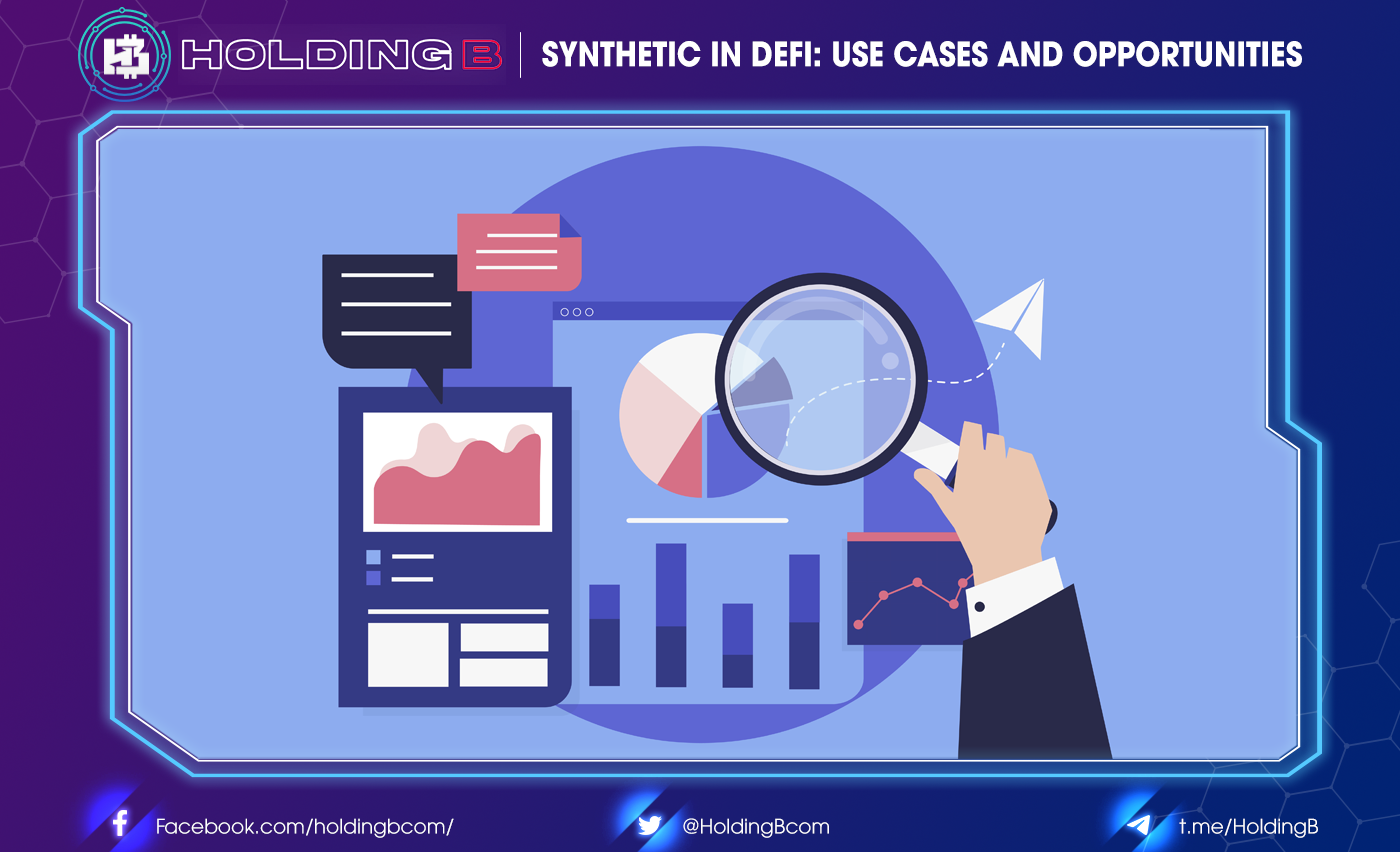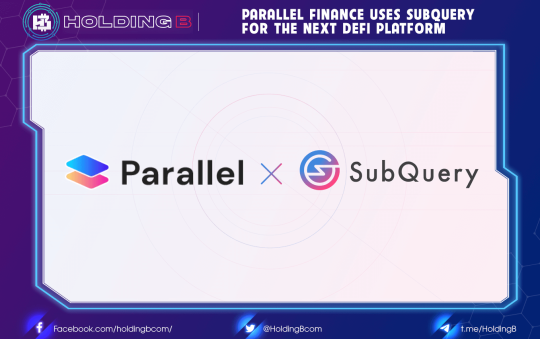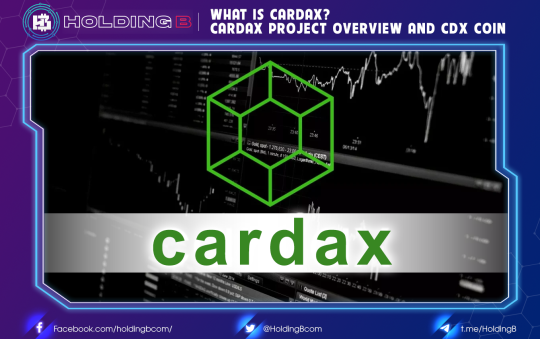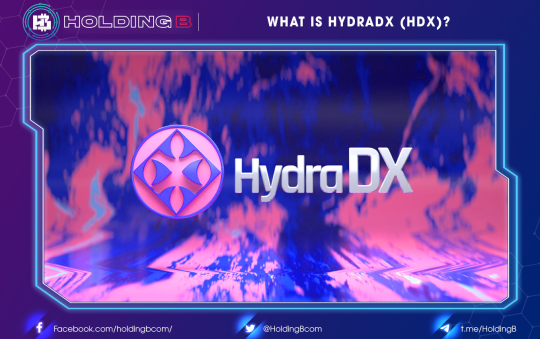What is synthetic?
Synthetic is a financial instrument that simulates other instruments. In other words, the risk/reward profile of any financial instrument can be simulated using a combination of other financial instruments.
Synthetic consists of one or more derivative products, which are assets based on the value of the underlying asset and include:
- Futures, futures and swaps
- Options, credit derivatives, such as credit debt swaps (CDS) and asset-backed securities
Advantages of synthetic
There are many reasons why an investor chooses to buy a synthetic asset, including funding, liquidity creation, and market access.
Funding
Synthetic can reduce funding costs.
One example is the total return swap (TRS) used as a financing tool to secure financing for assets held. It allows the recipient to fund a group of assets that they already own and the swap partner to make a profit from funds secured by a group of assets. Used in this way, TRS is similar to a secured loan because:
- The party that sells the securities and agrees to buy them is the party that needs funding
- The person who buys the securities and agrees to sell them, the bank is the financial provider.
Create liquidity
Synthetic can be used to inject liquidity into the market, helping to reduce costs for investors.
One example is the default credit swap. CDS is a derivative contract between two parties, credit protection buyers and credit protection sellers, in which the buyer makes a series of cash payments to the seller and receives a promise of compensation for credit losses due to “credit events”, such as non-payment, bankruptcy or restructuring. This gives CDS sellers the ability to purchase a underlying asset in a synthetic way, and CDS buyers the ability to protect their credit risk against the underlying asset.
The CDS market is more liquid than their base bond market. One of the main reasons for this is standardization: Bonds issued by a particular company are often fragmented into a number of different issues, differing in coupons, maturities, covenants, etc. As a result, fragmentation reduces the liquidity of these bonds. On the other hand, the CDS market provides a standardized location for the company’s credit risk.
Market access
Synthetic can open up the market of participation relatively for free, by recreating the cash flow of virtually any security, through a combination of instruments and derivatives.
For example, cds can be used to reproduce the exposure of a link. This can be useful in situations where it is difficult to get bonds on the open market.
Another specific example is using five-year Tesla bonds that are yielding 600 basis points over the Treasury:
- Buy $100,000 of the 5-year treasury and keep them as collateral.
- Write (sell) a five-year CDS contract worth $100,000.
- Get interest on the treasury and get 600 basis points annual premium on CDS.
Without default, treasury vouchers plus CDS premiums will yield the same yield as 5-year Tesla bonds. If the Tesla bond defaults, the portfolio value will be the Treasury minus the CDS payment, resulting in the default loss on the Tesla bond. So in both cases (default or not by default), the return on the portfolio (treasury + CDS) will be the same as owning Tesla bonds.
What makes a good composite asset?
In some cases, the development of synthetic products is only possible when the critical liquidity volume has been achieved on the inside. It is very rare to create a synthetic product if it is basically too illiquid as it has the potential to reduce the economic benefits.
Total swap profits are a good example of this process. Although the credit derivatives market began to take shape in the early 1990s, total profit swaps were not listed or widely traded for several years. In fact, investors or speculators who are looking to be exposed to a particular corporate bond or bond index are more likely to buy or sell bonds or direct reference indices.
As market makers begin to manage their credit portfolios more aggressively and two-way valuations across a wide range of credit derivatives, activity begins to build opportunities for investors to engage in aggregate credit positions through an improved total return swap. When a strong two-way market begins to take shape, bids spread on the synthetic compression platform, attracting many eager end-users to assume or transfer credits synthetically. The market can now support a wide range of credit references as the underlying credit derivatives market is liquid, active, and well supported.
Why synthetic in combination with DeFi?
There are several reasons why synthetics are useful for many people involved in the ecosystem of Decentralized Finance (DeFi).
Expanding the size of assets
One of the biggest challenges in this area is bringing real-world assets into the chain in a non-trust way.
An example is fiat currency. While it is possible to create a stablecoin that is mortgaged in fiat currency like Tether, another approach is to achieve a aggregate price with USD without having to hold the actual asset with a centralized partner. For many users, the level of price exposure is good enough. Synthetic provides a mechanism for real-world assets to be traded on a blockchain.
Expand liquidity
One of the main problems of the DeFi space is the lack of liquidity. Market makers play an important role here for both established and established cryptocurrencies, but there are limited financial instruments for appropriate risk management. Synthetic and broader derivatives can help the market scale up their operations by protecting risk and protecting profits.
Scaling technology
Another problem is the current technical limitations of the platforms. smart contracts. Cross-chain communication remains unresolved, which limits the availability of assets on a decentralized exchange. However, with the aggregate price, traders do not need direct ownership of an asset.
Participating in scaling
While aggregated platforms are traditionally available to large and sophisticated investors, smart contract platforms don’t need permission like Ethereum to allow smaller investors to access their interests. It will also allow more traditional investment managers to get involved in the sector by increasing their set of risk management tools.
Synthetic in DeFi
In fact, there has been widespread use of synthetics in the DeFi space. Below, will provide some examples of projects that use synthetics along with simple diagrams of what the property creation process looks like.
- Purple: Real property
- Green: Synthetic assets
Abra
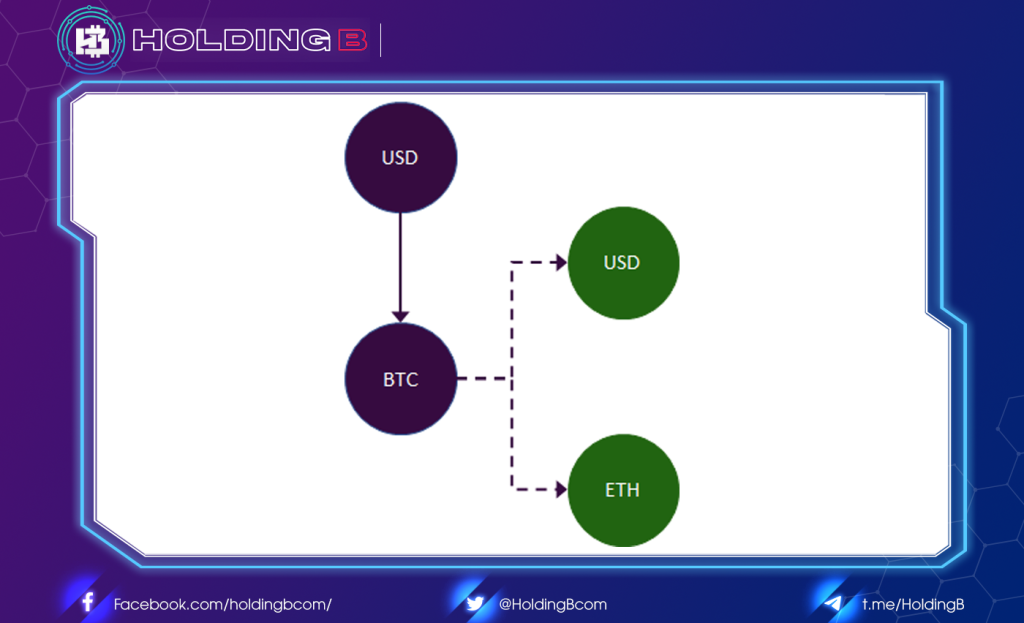
ounded in 2014, Abra is the origin of synthetic in crypto. When Abra users deposit money into their wallet, the amount is immediately converted into Bitcoin and is denoted as USD in the Abra app. For example, if Alice deposits $100 into her Abra wallet and the Bitcoin price is $10,000, she will receive a deposit of 0.01 BTC that will show up as $100. Abra can do this by maintaining a BTC/USD peg ensuring that Alice has the right to exchange $100, regardless of the price movement of BTC or USD. Abra is creating a stablecoin that is collateralized in cryptocurrencies.
Moreover, Abra immediately hedges its risks. When users top up their wallets, they are effectively executing short positions for Bitcoin and long positions for risk-hedged assets. At the same time, Abra is gaining a long position for Bitcoin and a short position for hedged assets.
MakerDAO
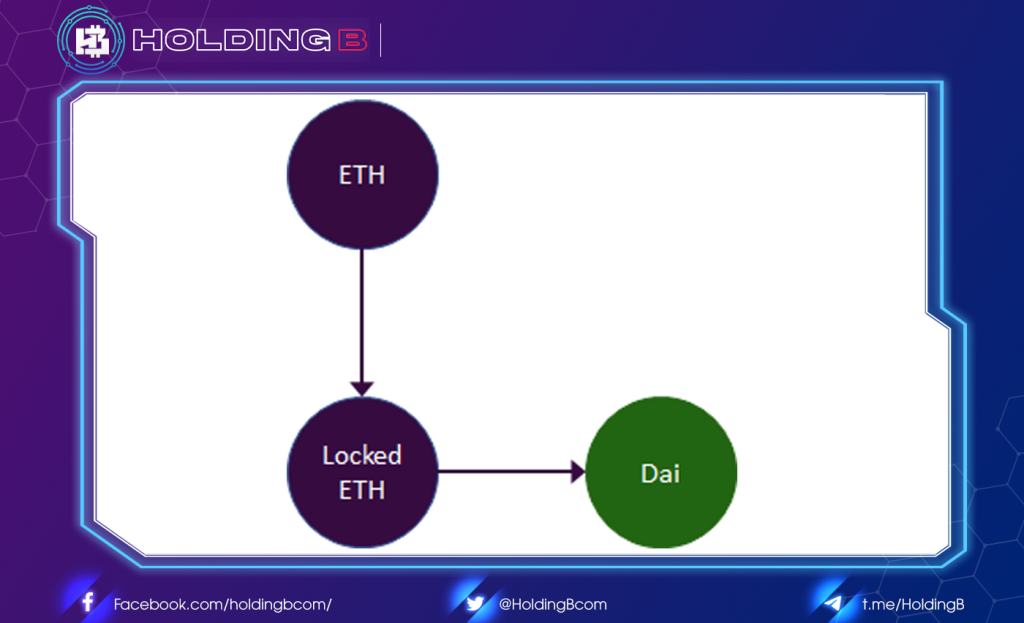
MakerDAO’s DAI stablecoin may be the most widely known and widely used synthetic currency in DeFi. By locking Ethereum as collateral, users can create a composite asset called DAI, which maintains a soft price anchor to the USD. In fact, DAI holders receive a aggregate price difference with USD. Similar to Abra’s design, this “collateral-backed synthetic assets” model has become popular in many other protocols.
UMA
UMA provides a protocol for total return swaps on Ethereum, which can provide integrated exposure to a variety of asset classes.
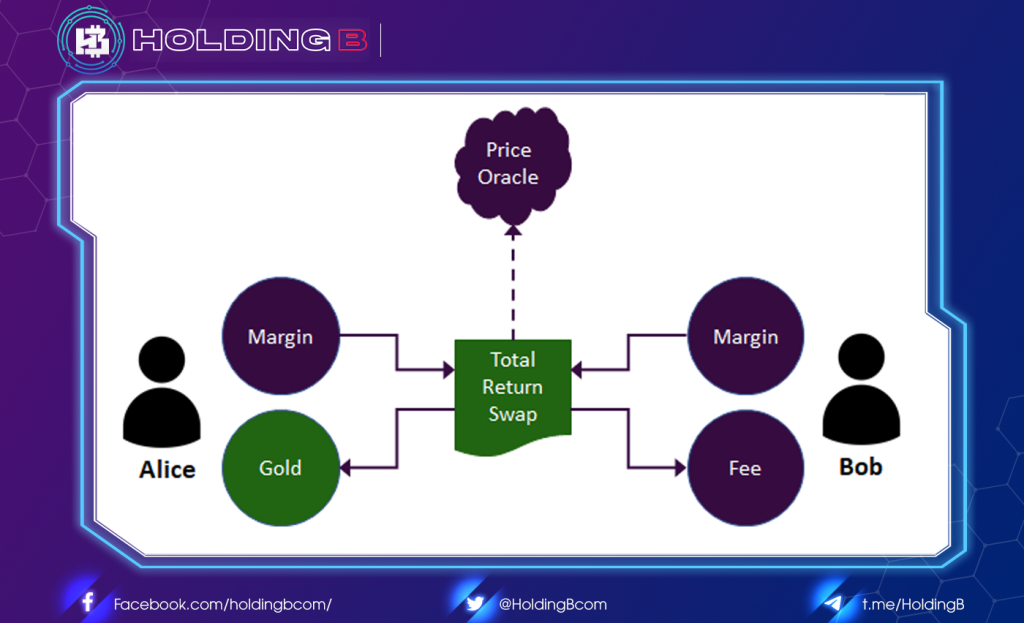
The smart contract contains the economic terms, termination clauses and margin requirements of the bilateral agreement between Alice and Bob. It also requires predicting the current price return price feed of the underlying reference asset.
One way of implementing the protocol is the USStocks token (ERC-20), which represents the U.S. S&P 500 index and is traded on the Beijing-based decentralized exchange DDEX. This is done by fully mortgage one side of the UMA contract and then encrypting the margin account, resulting in synthetic ownership. long position of that contract.
MARKET Protocol
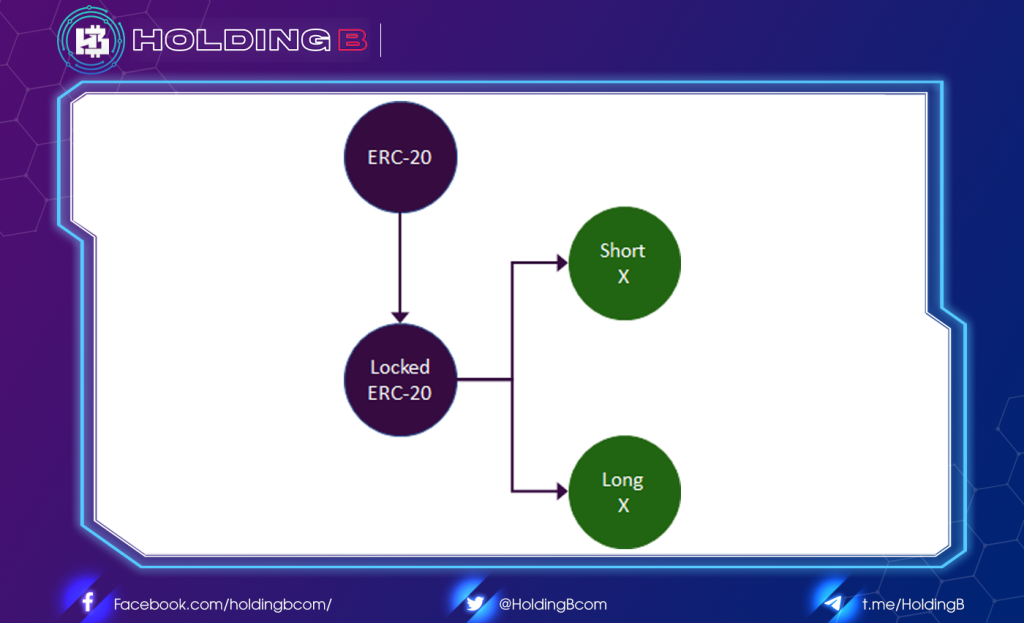
The MARKET protocol allows users to create aggregated assets that track the price of any reference asset through an oracle. These “position tokens” provide limited long- and short-term exposure to the base, while together providing a payback structure similar to the structure of a rally in traditional finance. Similar to DAI, long and short tokens represent requirements for a group of collateral.
Rainbow Network
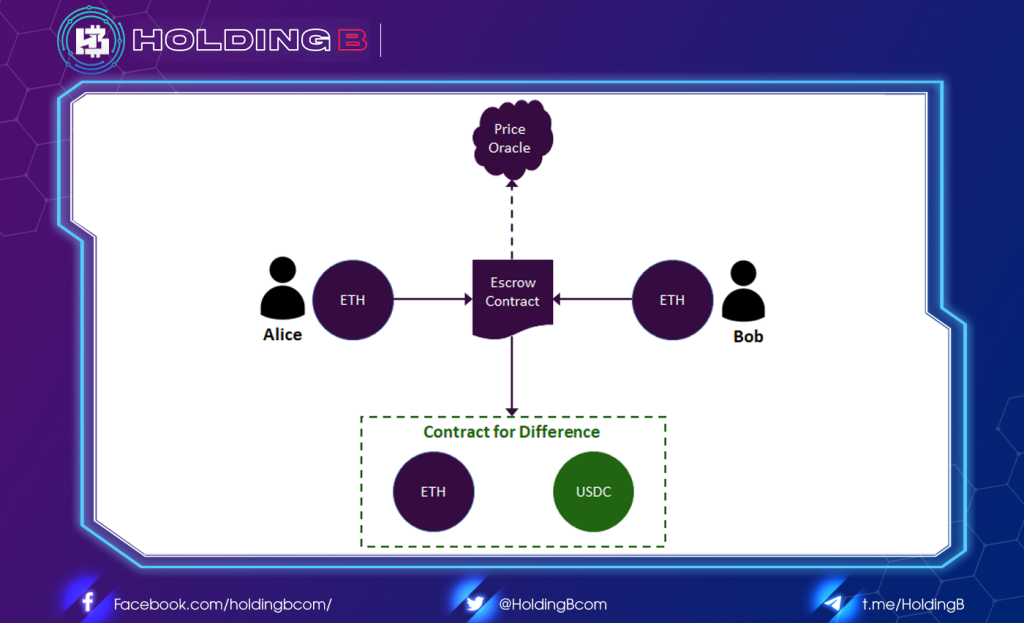
Rainbow Network is an out-of-chain unsupervised payment and exchange network that supports any liquid assets. The platform includes “Rainbow channels” – a variant of the payment channel where payment balances are calculated based on the current prices of other assets. In other words, the protocol organizes aggregate assets along with other assets in a payment channel.
In Rainbow channels, each state represents a contract of difference, similar to a payback swap.
Synthetix
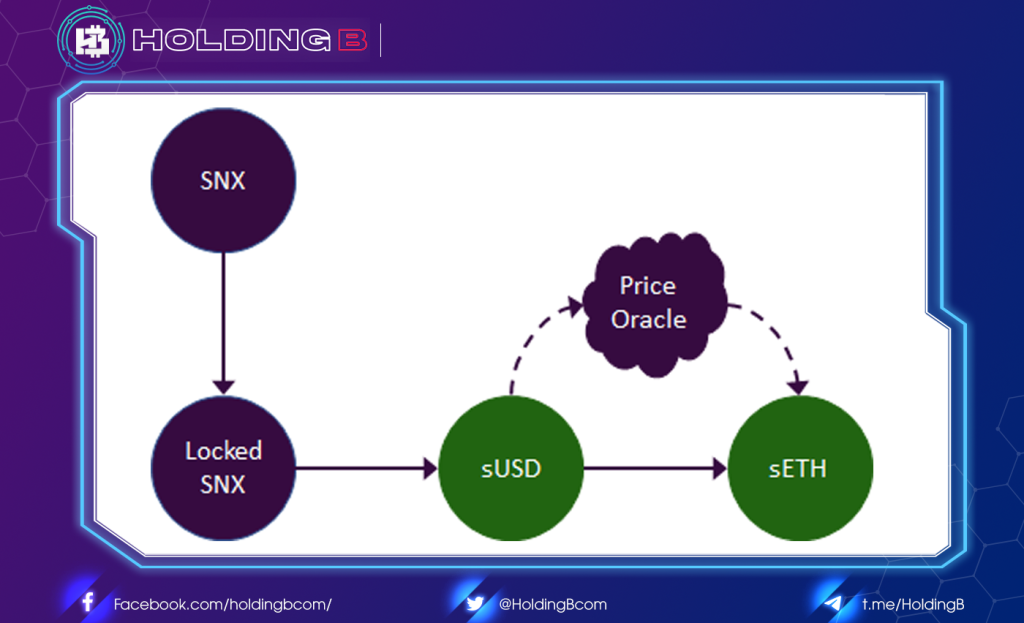
Summary
Synthetic assets are complex financial instruments that have plagued the global economy many times. Similarly, they can also pose a risk to protocol security in ways we can’t yet understand. That said, synthetic continues to play an important role in traditional financial markets and is becoming an important component of the DeFi market.
Read more: Crypto Synthetic Asset in DeFi
See ya in the next article !
Don’t forget to follow useful articles about Crypto Market from team Holding B !!!
- Telegram Channel: https://t.me/HoldingBcom
- Telegram Group: https://t.me/HoldingB
- Website: https://holdingb.com/
- Twitter: https://twitter.com/HoldingBcom
- Facebook: https://www.facebook.com/holdingbcom

